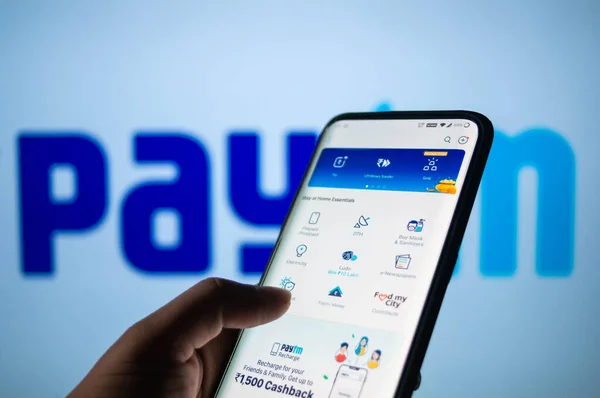Millennials are talk of the town now days. Who are these Millennials? Why they are in discussion?
Millennials include the generation born in early 1980s as starting birth year and the mid-1990s to early 2000s as ending birth year. However, the widely accepted defining range for this generation is between 1981 and 1996. They are also known as Generation Y or Gen Y. They are the generation in between Generation X and Generation Z.
Unlike the earlier generations, they show a radical change in their habits, choices and preferences. They dominate the most social networking groups and depend largely on digital platforms for their majority of works. The impact can also be seen on their banking habits. This is one of the reasons why Banks have started emphasizing so much on using digital platforms. On one hand, It helps banking industries in reducing the stress on the transaction cost; on other hand it’s a great challenge to be in tune with very rapidly changing technologies to attract and retain the Millennials.
Millennials’ Banking style and preferences:
In our country, if we visit any nationalized bank branch in first week of the month, we can see a long queue of pensioners for pass book printing and withdrawal of a few bucks of their regular monthly pension. They don’t mind to spend hours in the branch. If they have any issue with the services, they will come to the branch to express their grievances. They don’t mind to visit twice or thrice for a routine banking transaction. They are also highly loyal to the bank and emotionally attached too. So, most of them carry on their banking from the same bank for their whole life. But millennials have entirely different approach to their banking needs. They rely on digital modes of banking. They are moving away from the brick and mortar banking pattern and don’t like to spend much time in the branch for any of their banking needs. They have everything in their mobile. They use mobile banking apps for all their financial needs including checking balance and transaction history, Schedule person-to-person money transfers, transfer funds between accounts, investment and purchasing.

They show their preference to the bank which is more proactive and user friendly on digital platform. They focus on convenience and Perks. Cash back, rewards points and discounts attracts them a lot. Still they are inclined to have personal touch and visit the branch in a few months at least. When Millennials become unhappy or dissatisfied with their bank, they quickly switch over to the other option. They are more likely than Baby Boomers and Generation Xers to switch banks. Almost every 5 out of 10 millennial use mobile banking which is just over twice the number of Baby Boomers who bank via their mobile device.
Millennial expect something extra for their every single buck in every field and banking is not an exception. They are inclined to the bank offering lower interest rate on loans or higher interest rate for their deposits. They are delighted with banking fee refunds like ATM fee refund. Almost 9 out of 10 millennials have “No-fee banking” as a top priority in choosing their banks. Unlike the earlier financial habit of saving first and then spending out of savings, millennial believe in spending first and then earning to repay the same. This has a great impact on retail banking.

Neobanks and Credit Unions are attracting millennials. Neobanks – Fintech companies which operate exclusively on online platform without any brick and mortal structure are attracting millennial generation as they can not only offer traditional banking services, such as viewing balance in savings accounts and account statement but can also provide a broader range of products and services, such as payment, fund transfer services, online personal and business loan approvals and various apps for investments, savings, bill payment and expense tracking etc. Some of the key attracting factors in Neobanks for millennial are: streamlined and tech-centered approach, App based hassle free loan approvals compared to regular banks, low or no banking fees, wider ATM network access or ATM refunds, and financial planning and management tools. Higher interest rate on deposits due to lower overhead costs of branchless banking is also a reason for millennial to make Neobanks their choice. However, the lack of branches is one of the drawbacks of the Neobanks in their attempt to attract Millennials who still need a human touch for some of their banking needs.
Credit unions are another option for millennials for their banking needs. They often have an edge over traditional banks when it comes to the fees they charge for banking products, interest rates on loans, and interest rate they offer on deposit products. They have an edge over online banks in terms of the human component. Of course the challenge for millennials is to find a credit union that they are eligible to join.
Challenge for the traditional banking industries is how to attract and retain the millennials. New technologies are evolving very rapidly. Artificial Intelligence and machine learning have changed the entire way of work in the present scenario. Hence, all private as well as nationalized banks in India are marketing digital products aggressively. Internet banking, mobile banking and UPI payment apps are being aggressively marketed to be in tune with the changing technologies and customers’ needs and desires. SBI has launched YONO, a single app for multiple requirements including all routine banking transactions, investment, insurance, loans and purchases etc to attract these new generations. Another challenge is to find the right balance between offering digital banking features and products, and offering a personalized experience to the millennial generation. Banking industry must be proactive and dynamic to attract and retain this dynamic generation.
Deepak Parmar
AGM & Director, SBILD Bhavnagar.
(Author of the Book “Heart Beat is Chargeable Now”)





